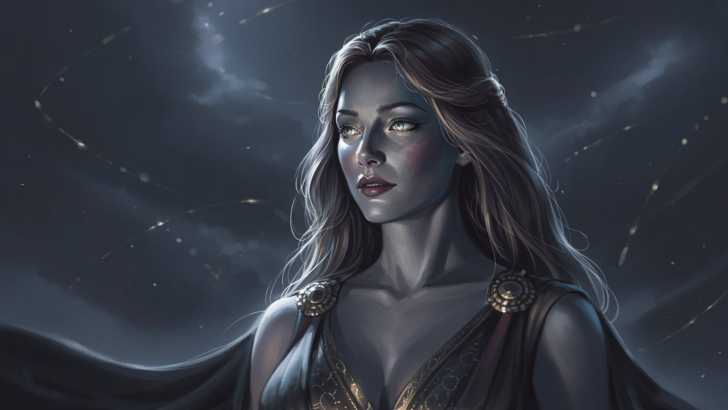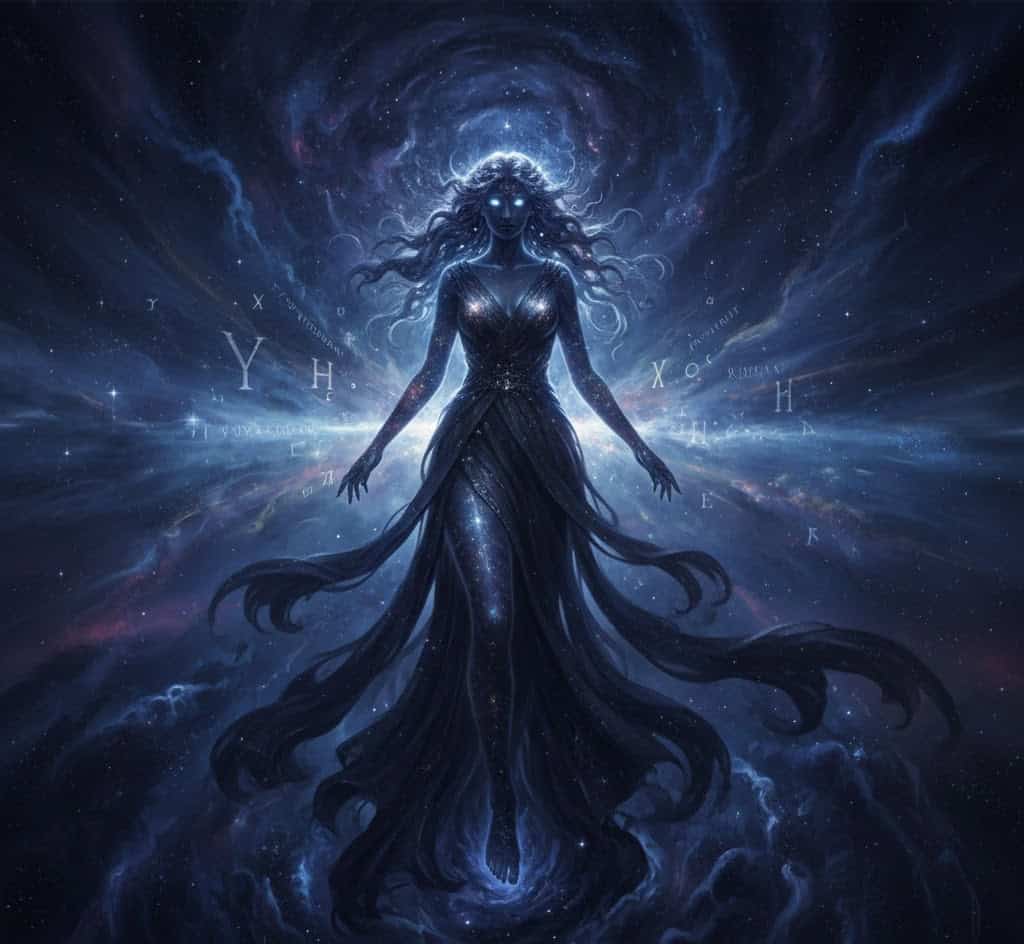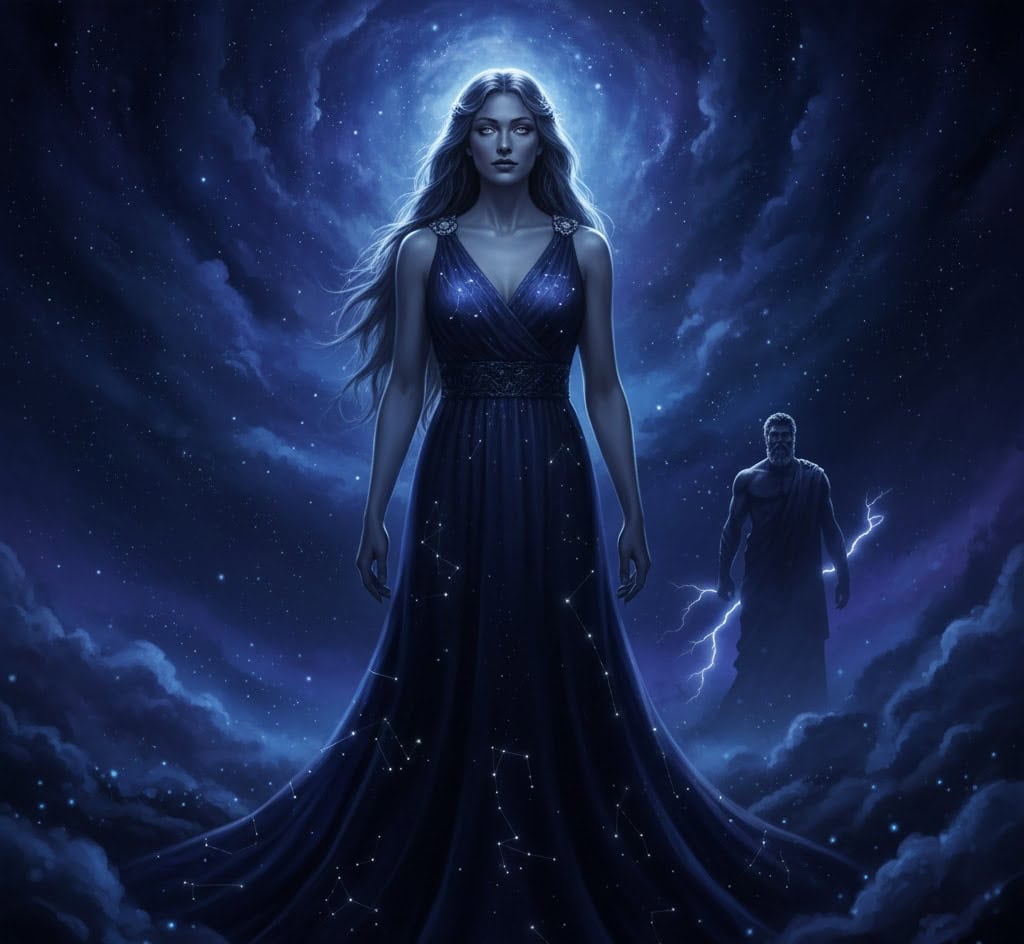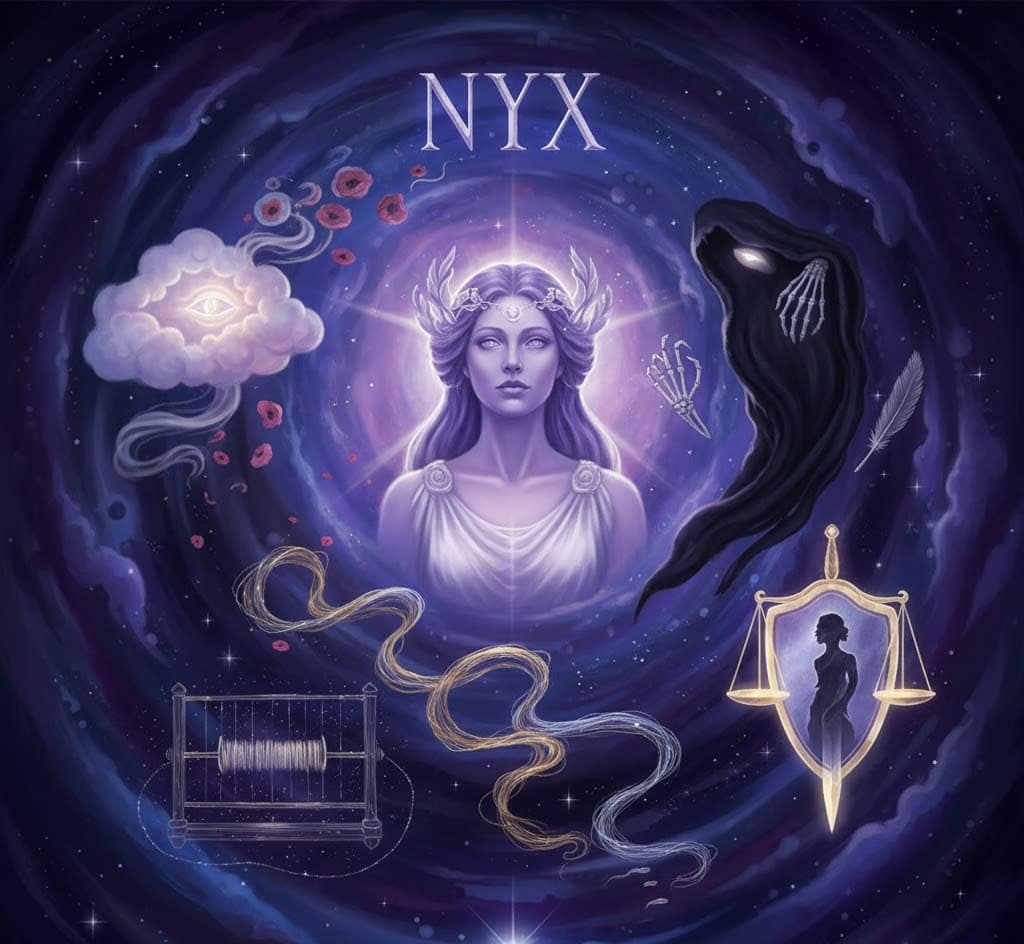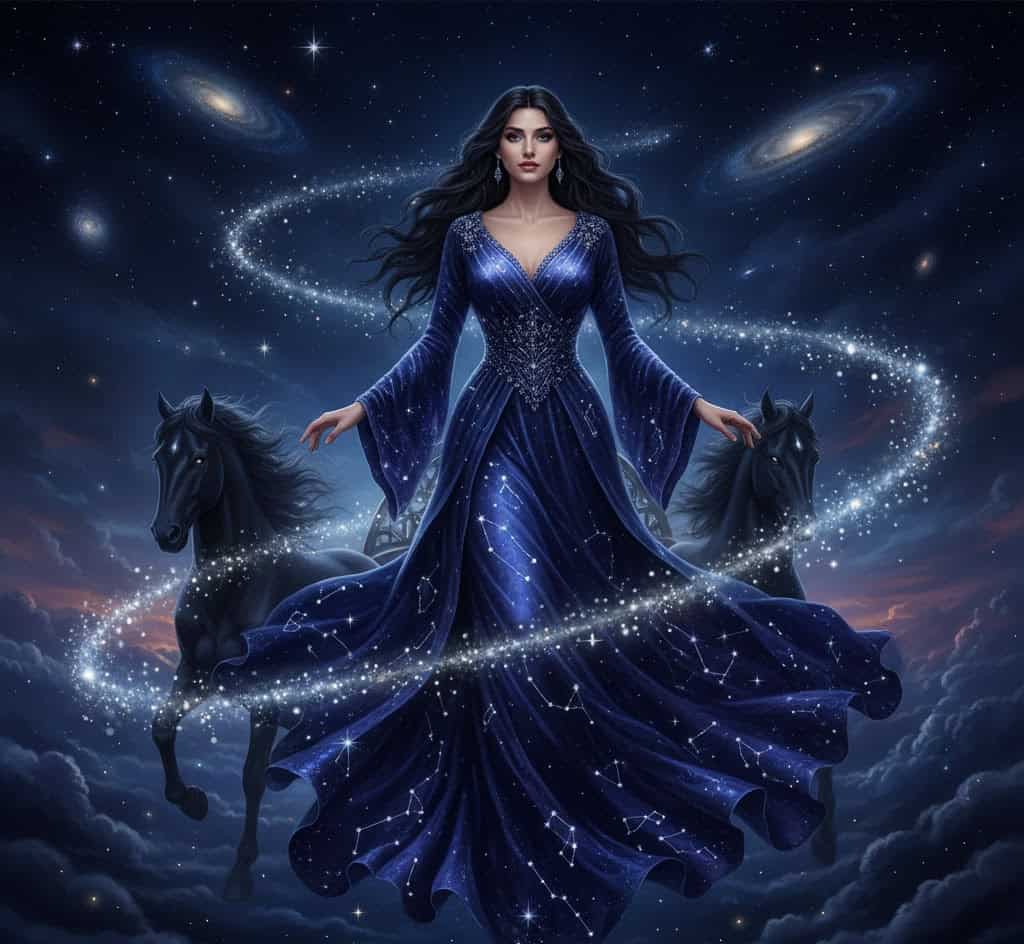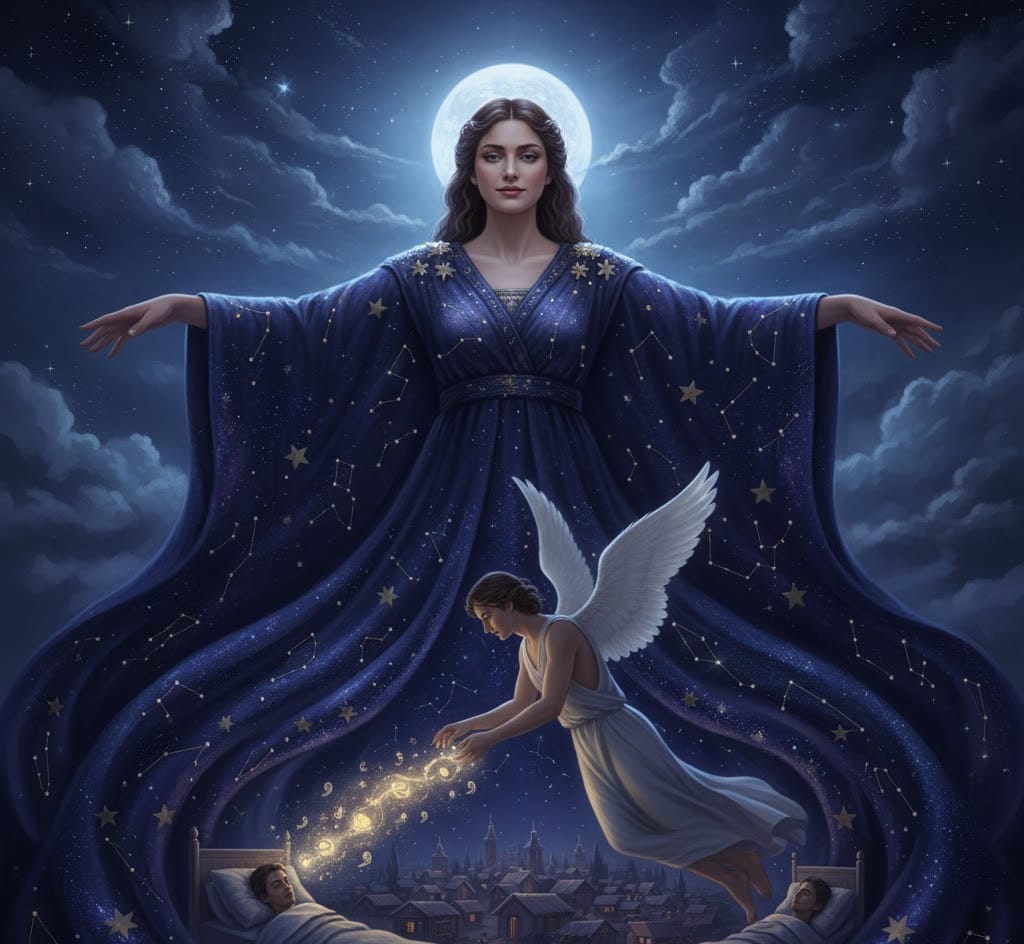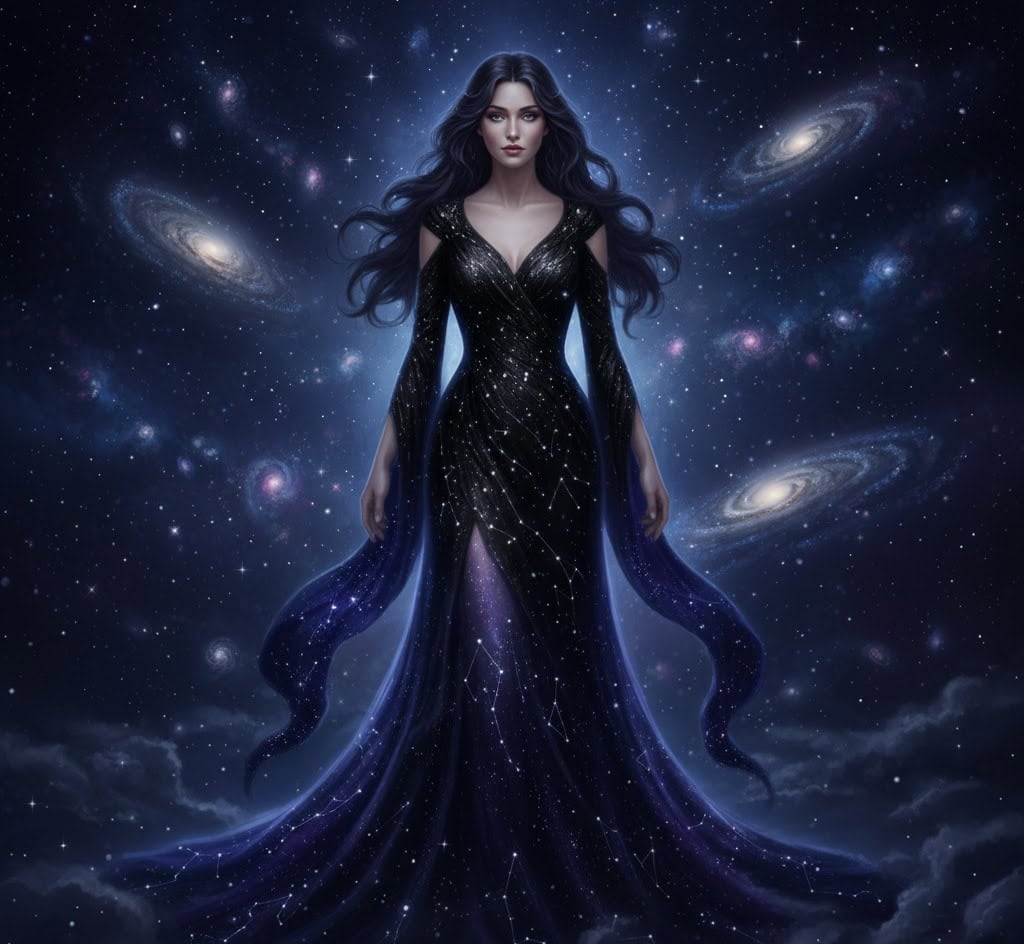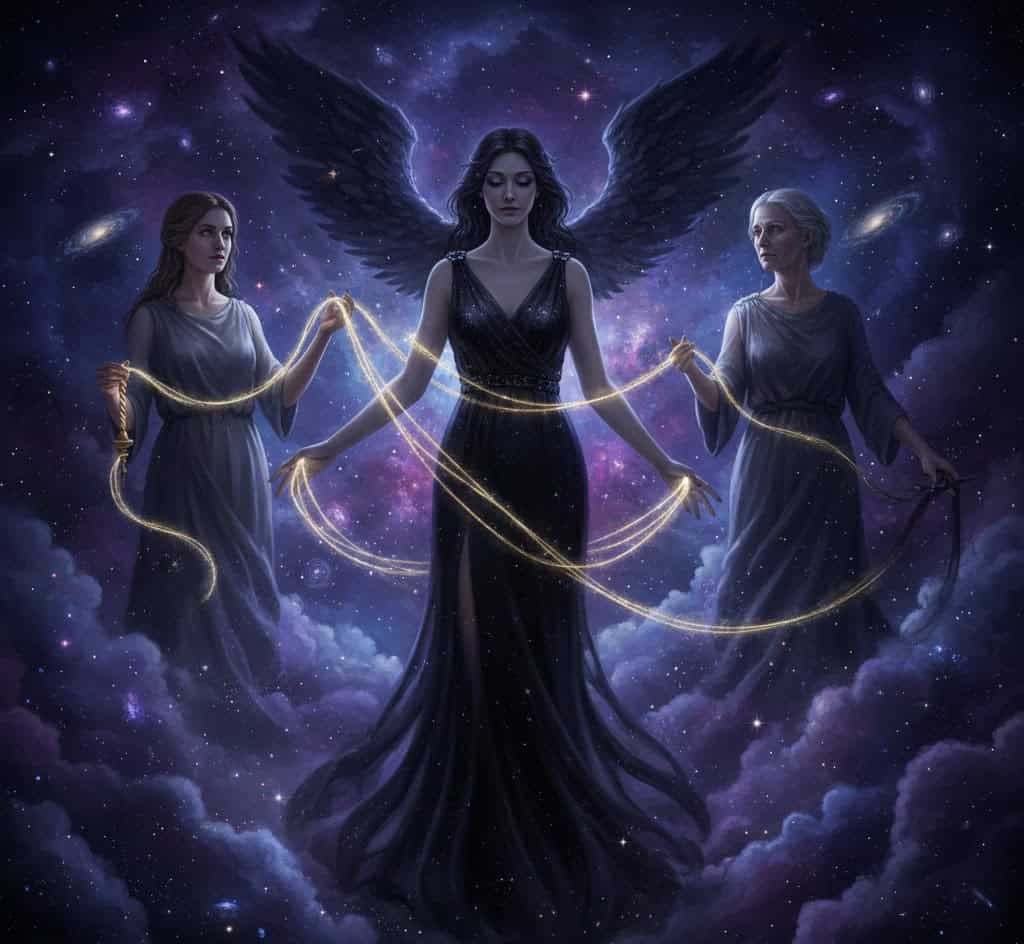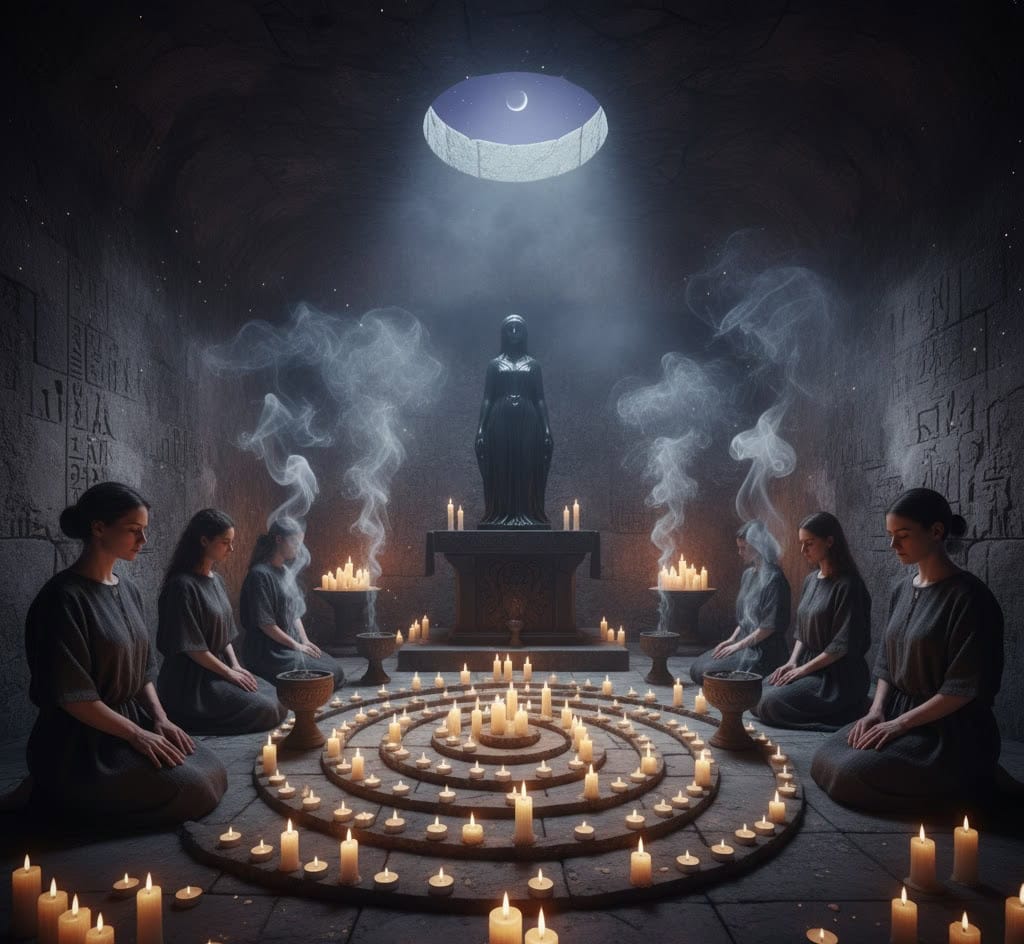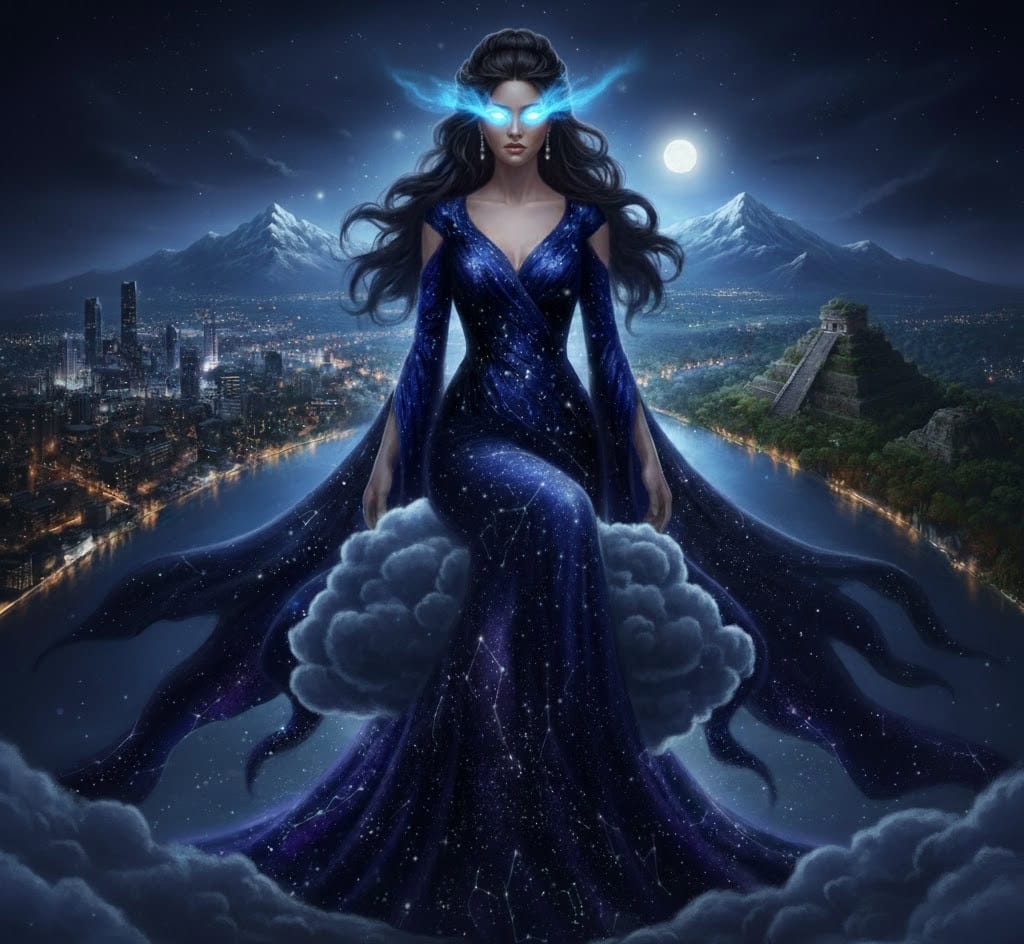In Greek mythology, Nyx was no ordinary goddess. She wasn’t just another deity with a throne on Mount Olympus — she was older, darker, and far more mysterious.
Born from Chaos itself, Nyx embodied the power and beauty of night, commanding awe even from Zeus.
Her presence touched every shadow and dream, every secret whispered under moonlight. She was the dark power.
Here are ten fascinating facts about Nyx, the goddess who ruled the night with both grace and fear.
1. Nyx Was One of the Primordial Deities
Before the Olympian gods, before even the Titans, there were the Primordials — the first beings to shape the universe.
Nyx was one of them, born directly from Chaos, the formless void that existed before creation. She represented the night itself, not just as time but as a cosmic force.
Her darkness wasn’t evil but essential — it was the stillness from which all life began, the mother of mystery and rest.
2. She Was So Powerful That Even Zeus Feared Her
Zeus, known for his strength and authority, was said to fear only a few beings, and Nyx was one of them.
Ancient writers described moments when even the king of the gods avoided crossing her.
In one myth, when Zeus grew angry with her son Hypnos for putting him to sleep, Nyx intervened. Rather than risk her wrath, Zeus retreated.
Her power came not from thunder or war but from the deep, untouchable strength of the night itself — calm, infinite, and absolute.
3. Nyx Lived Beyond the Edge of the World
Unlike other gods who resided on Mount Olympus or in the underworld, Nyx had her own mysterious home.
She lived at the edge of the world, where day met night. There, she shared a shadowy palace with her brother Erebus, the god of darkness.
Every evening, she would rise from this hidden realm, spreading her cloak across the sky to bring night to the world.
As dawn approached, she would return, giving way to her daughter Hemera, the goddess of day.
4. She Was the Mother of Many Mysterious Beings
Nyx wasn’t only the night — she was also the mother of everything that dwelled in shadow.
Without a partner, she gave birth to powerful and symbolic deities: Hypnos (Sleep), Thanatos (Death), Moros (Doom), the Fates, and Nemesis (Retribution).
Each of her children represented parts of human existence that come alive in the dark — dreams, destiny, death, and justice.
Through them, Nyx’s influence extended across every corner of mortal and divine life.
5. She Was Often Depicted With a Starry Cloak
In ancient art, Nyx appeared as a beautiful woman draped in flowing robes, her body surrounded by stars.
Sometimes, she was shown riding a chariot drawn by black horses, trailing night behind her as she moved across the heavens.
Her cloak, filled with constellations, symbolized how she carried the universe’s mysteries.
Artists portrayed her as both gentle and majestic, reminding people that darkness wasn’t something to fear — it was a space for dreams, creation, and rest.
6. Nyx’s Role in Dreams and Sleep
Nyx’s influence stretched into the dream world. Her son Hypnos ruled over sleep, and together they shaped the boundary between wakefulness and rest.
The Greeks imagined that when night fell, Nyx spread her wings to comfort the world, and Hypnos followed close behind, soothing weary minds.
In dreams, mortals might catch glimpses of Nyx’s presence — a shadowy comfort or a whisper from the divine night reminding them of unseen truths.
7. She Was a Symbol of Feminine Power and Mystery
Unlike many Greek goddesses who were tied to roles like marriage or beauty, Nyx represented independence.
She existed before creation, self-born and unbound by any male counterpart. Her power came from within, an energy that could calm or terrify.
In ancient thought, she embodied the dual nature of femininity — nurturing yet unknowable, peaceful yet powerful.
To philosophers and poets, Nyx symbolized the hidden side of existence, the divine mystery that could never be fully understood.
8. Nyx Was Connected to Prophecy and Fate
Nyx’s children included the Fates — Clotho, Lachesis, and Atropos — who spun, measured, and cut the thread of life.
Because of this, Nyx herself was seen as the source of fate’s power. Some myths said that even oracles received visions from her realm, where past, present, and future intertwined.
Her darkness held all possibilities, as if every destiny was written in the stars scattered across her cloak.
The night wasn’t just the absence of light — it was the place where the universe whispered its secrets.
9. She Was Worshiped in Secret and Mystery Cults
While Nyx didn’t have large public temples like Athena or Hera, she was honored in private and mystical ceremonies.
Some ancient mystery cults saw her as the mother of all wisdom and initiation. Worshippers believed that through her, one could access deeper spiritual truths hidden beneath the surface of life.
Her name was invoked in nighttime rituals, where candles and incense created sacred shadows, inviting her presence.
To honor Nyx was to embrace the beauty of the unknown and the balance between light and dark.
10. Nyx’s Influence Reached Far Beyond Greece
Nyx’s essence — night as divine power — appears across many cultures. The Romans called her Nox, while other traditions personified the night as a mother goddess of creation and protection.
Even in modern art and literature, her image endures as a symbol of mystery and empowerment.
From the silent beauty of the night sky to the comfort of sleep and dreams, Nyx continues to remind humanity that darkness isn’t to be feared – it is where everything begins and where every story returns.

Ho sempre sentito una forte connessione con il Divino fin dalla mia nascita. Come autrice e mentore, la mia missione è aiutare gli altri a trovare l'amore, la felicità e la forza interiore nei momenti più bui.

